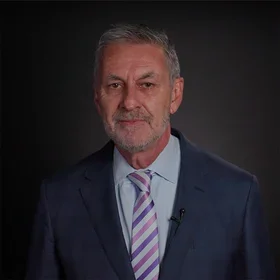By Steven Cohen, Ph.D., Director of the M.S. in Sustainability Management program, School of Professional Studies
Since Donald Trump won the election to a second term as President, many of my students and some alums have asked me: What does this mean for the future of our profession? My answer is a simple one. Sustainability management is the next stage in the evolution of effective organizational management, and it is unstoppable. The political world in Washington may dismantle policies that protect the environment, but the real world of corporations, local governments, and institutions must deal with a more complex, interconnected environment and must be mindful of their impact on the world and the world’s impact on their organizations. Declaring that climate change is a hoax does not change the facts of a warming planet or its impact on us. I write this as the smoke from climate-accelerated forest fires in New Jersey and Prospect Park in Brooklyn degrades the air quality in New York City.
The last century and a half have seen a steady improvement in the field of organizational management. In the 20th century, we saw the development of mass production, just-in-time inventory control, global supply chains, sophisticated human resource and team management, accounting and financial management, information and performance management, total quality management, and now sustainability management. Before the Security and Exchange Commission was begun by FDR in 1933, there were no rules for corporate financial reporting, and accounting was mainly focused on personal income tax compliance. Most organizations lacked chief financial officers, and organizational financial control systems were a mid-twentieth-century management innovation. Before low-cost computing, low-cost internet, and cell communication, it was difficult to track organizational performance—other than monitoring revenues and expenditures. Today, every well-managed organization tracks key performance indicators and adjusts management decisions in response to data. Technology has increased the productive capacity of organizations and the demands made on senior management to understand, improve, and guide performance. Sustainability management is the latest set of practices designed to help management cope with a more crowded and resource-strained planet.
The world and the global economy are increasingly complex and interdependent. Navigating that complexity requires creative and innovative strategic thinking and care in understanding the causes and effects of organizational behavior. Organizations that have incorporated sustainability into their management routines tend to be careful and conscious of their actions. Sustainability is a means toward the goals of organizations, not self-justifying principles of an ideology of “correct behavior.” Environmental sustainability should now be seen as a subfield of sustainability management, which today includes issues such as management and staff diversity, transparent organizational governance, and the organization’s impact on its surrounding community or communities. This is not “woke management” but mindful management. It should not be undertaken for symbolic purposes but to improve an organization’s performance.
The notion of diversity and inclusion as an ideology rather than as a management principle relates to how diversity is defined and conceptualized. For people motivated by ideology, diversity is the goal itself and is self-justifying. Diversity is pursued because it is right and ethical. I sympathize with this view because I consider exclusion based on race, religion, sexual orientation, ethnicity, or national origin to be unethical. However, in management terms, diversity is utilized to ensure the organization’s staff and management bring a wide variety of perspectives to the organization’s work. Merit is still sought in recruiting the team, but the definition of merit is broadened to ensure the people hired have different lived experiences. Diversity is a means and not an end. Similarly, a concern for environmental impact is also utilized as a cost-cutting measure to save the costs of energy, waste management, and water and to reduce the financial risks of environmental liability. Environmental awareness also drives organizations to plan for the impact of extreme weather events, which can disrupt facilities, supply chains, and customers.
The reason that the profession of sustainability management will continue to progress is because it transcends politics and is deeply related to organizational effectiveness. Politicians may deny climate science and other facts, but people managing organizations do not have the luxury of ignoring reality. If your business site is flooded by an extreme weather event or is at risk of damage from such an event, you’d better have a plan B to continue operations in another location. If your competitor has invested in solar energy and generates revenues from recycling organic waste, and you keep paying higher fuel bills and waste disposal fees, then your cost structure will suffer, and your competitive position will as well.
One of the primary analytic methods of sustainability management is life cycle analysis. Here, we attempt to analyze the environmental impact of every stage of the production process, including that incurred by suppliers and customers. This method enables us to determine the lowest impact and highest potential benefit from everything the organization produces.
Sustainability management is simply an effort to develop analytic methods and organizational practices designed to succeed in a more technologically complex, crowded world of finite resources. In some cases, the ESG issues being addressed are not central to organizational success but, like many best management principles, are used by investors to judge the quality of management. In a world of limitless information, people and institutions investing capital look for a wide variety of indicators of success. Yes, EBITA (earnings before interest, taxes, and amortization), revenues, expenditures, and market share are key. But investors also look for information on the organization’s competence, prospects, and strategy. They are trying to assess the risk to their capital. They know that environmental risk and the risk from climate-accelerated extreme weather events are real. Investors want to know if the organization’s strategy accounts for these factors.
Additionally, as I wrote only a week ago:
“If a second Trump administration is elected tomorrow, it is obvious that environmental regulation and organizational capacity will be impaired. Even a Harris administration will likely face ideological hostility to climate and biodiversity policy in Congress. Anti-environmental policy is typically disguised as anti-big-government regulation, but that strategy has limits. If your home is destroyed by climate-change-induced floods or fire or your children are exposed to toxins that make them ill, anti-regulatory ideology is quickly discarded in the face of experiential reality. Moreover… the number of non-federal players in environmental protection is massive and growing. For more than four decades, we have managed to overcome dysfunctional national environmental policy. It’s not fun, but it’s not like we haven’t watched this movie before.”
In other words, sustainability management is a response to a set of objective conditions. This includes the impact of pollution on human health and on the ability of our communities to withstand and recover from natural disasters. These conditions are real and not imagined. Ideology is irrelevant. In a more positive light, our culture is undergoing change as young people growing up in a more polluted and warming world are determined to reduce the environmental impact of the organizations they work for. One of my favorite recent examples of this took place earlier this year when a team at Amazon conducted an analysis and pilot project to develop an alternative to the little plastic bubbles that were used to protect products being shipped. They developed a paper alternative to plastic. They discovered a way to pack goods in paper that lowered package cost, lowered environmental impact, and did a better job of protecting products. That type of mindfulness and analysis is a wonderful example of sustainability management in action. Each day, organizational creativity is being unleashed to encourage environmental sustainability, closer relations with neighbors, and ensure that management decisions are not victims of groupthink and a lack of diverse perspectives.
As an educator of aspiring sustainability professionals, I have an ethical responsibility to ensure that the education we are providing responds to a real market need for expertise. As I often say, our primary outcome measure of success is that our graduates should have a better job when they leave than the one they had when they arrived. While we don’t always succeed, our winning percentage is superb, and I have enormous confidence that it will continue. While many professionals working in sustainability have good intentions, they typically lack training in the analytic tools of sustainability management. Our graduates have completed course work in greenhouse gas measurement, life cycle analysis, the circular economy, corporate sustainability reporting, climate mitigation and adaptation, energy efficiency, climate risk assessment, green energy finance and scores of other sustainability topics. Our profession grew during Trump 1.0, and we will continue to progress in Trump 2.0. I know I can’t predict the future, but let’s revisit this in January 2029 and see if I was correct.
Views and opinions expressed here are those of the authors, and do not necessarily reflect the official position of Columbia School of Professional Studies or Columbia University.
About the Program
The Columbia University M.S. in Sustainability Management program offered by the School of Professional Studies in partnership with the Climate School provides students cutting-edge policy and management tools they can use to help public and private organizations and governments address environmental impacts and risks, pollution control, and remediation to achieve sustainability. The program is customized for working professionals and is offered as both a full- and part-time course of study.



